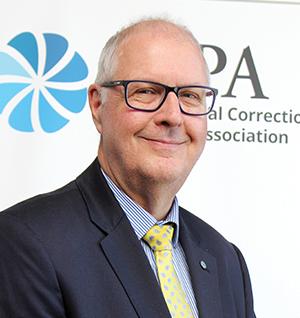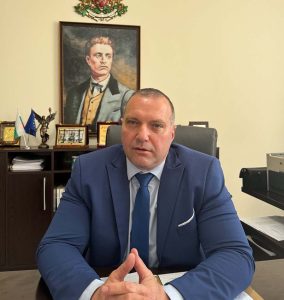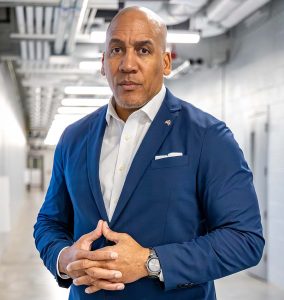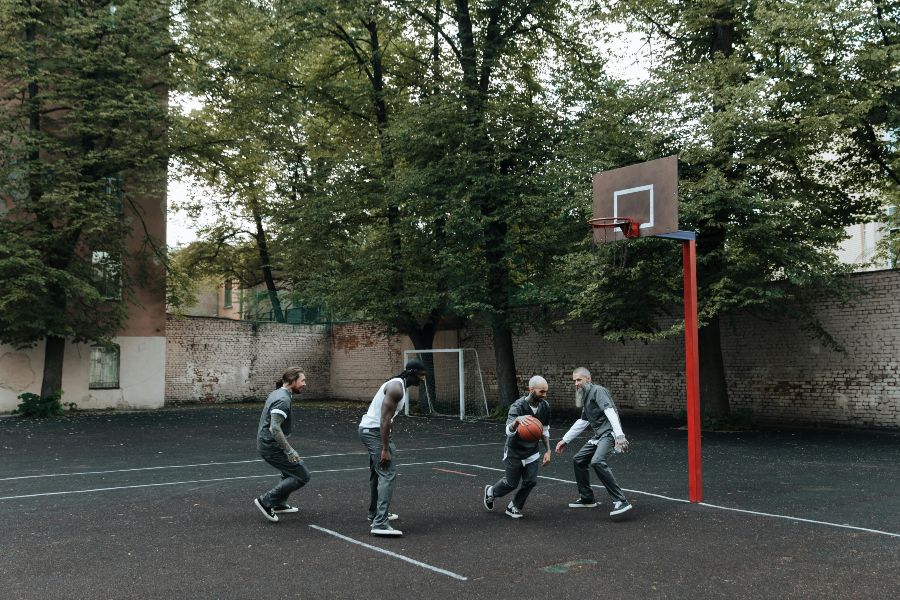Read this edition’s article delving into changing societal perspectives, technological advancements, environmental challenges, and other evolving factors are driving significant transformation in corrections.
To be sustainable and effective, any modernisation initiative needs to ensure the inclusion of persons deprived of liberty or those with lived experience from the onset.
Terry Hackett, Head of the Persons Deprived of Liberty Division, International Committee of the Red Cross (ICRC)

Terry Hackett
Head of the Persons Deprived of Liberty Division, International Committee of the Red Cross (ICRC)
Rather the interplay between technology and existing systems, power imbalances, and other social constructs within a place of detention need to be assessed to mitigate any potential compounding impacts on the rights or dignity of detainees.
This includes proactive assessments of risks associated with design and data-related bias, the black box of machine learning and challenges related to traceability of decision making, transparency and redress. Furthermore, technology must not be seen as the panacea to staffing shortages. Any modernisation must be built on the foundation of meaningful human interaction.
To be sustainable and effective, any modernisation initiative needs to ensure the inclusion of persons deprived of liberty or those with lived experience from the onset. This ensures a critical understanding of the potential impacts on the dignity and humanity of those detained.
Openness to the experience of others is also critical to a modern prison system and an important counter to doing things a certain way because they have always been done that way.
Larissa Strong, Commissioner of Corrections Victoria, Australia

Larissa Strong
Commissioner of Corrections Victoria, Australia
In addition to our focus on prison officer training and professional development, Corrections Victoria has also invested in its own clinical arm – Forensic Intervention Services – to deliver offence-specific interventions and to grow our expertise in how to best support behaviour change. However, a modern prison system also needs to use technology appropriately – as we have discussed.
Infrastructure is also a critical enabler. Corrections Victoria has been very fortunate in the Victorian Government’s investment in modern facilities. This investment includes architecture that has in-built features in its design that support safety and rehabilitation.
Our new accommodation units house plenty of programme and interview rooms, where acoustics and fittings have been designed to support engagement. Last year we opened new accommodation at our main women’s prison, which incorporated design feedback from the women in custody.
Openness to the experience of others is also critical to a modern prison system and an important counter to doing things a certain way because they have always been done that way.
Corrections Victoria is just one of the few jurisdictions outside of the United States to be operating the Inside-Out Prison Exchange Program Think Tanks. These Think Tanks support people in custody to work collaboratively with university students and allow us to better include the voices of people with lived experience to continually improve our system.
Under our ten-year Safer, Prisons, Safer People, Safer Communities reform agenda we are also formalising structures to harness the expertise and perspective of our workforce – supporting the development of policies and programmes that will make a difference and their implementation on the ground.
Technology is being used in more sophisticated ways providing more case-management flexibility and enhanced effectiveness in compliance management and intervention.
Peter Severin, President of the International Corrections and Prisons Association (ICPA)

Peter Severin
President of the International Corrections and Prisons Association (ICPA)
It is exciting to be part of the innovations in prisons and probation for increased desistance and a reduction in re-offending.
CEP strongly advocates that we do not use technology just because we have it, but to use it smartly in order to make our work and skills better.
Jana Špero, Secretary General, Confederation of European Probation (CEP)

Jana Špero
Secretary General, Confederation of European Probation (CEP)
This includes new approaches in attracting new generations to work in probation services and using new technologies in basic and life-long learning processes. We need to adjust and prepare trainings using VR and AI, mobile versions of trainings and short interactive exercises.
CEP strongly advocates that we do not use technology just because we have it, but to use it smartly in order to make our work and skills better.
While I believe that the physical environment is only part of the complex care needed by prisoners, its design and layout have a significant impact on people's behaviour.
Ivaylo Yordanov, Chief Commissioner, General Directorate "Execution of Sentences" (GDES), Bulgaria

Ivaylo Yordanov
Chief Commissioner, General Directorate “Execution of Sentences” (GDES), Bulgaria
The improvement and modernisation of the system for the execution of sentences in Bulgaria continue to be an important priority for the Ministry of Justice and GDES.
We are focused on innovations and modern solutions to make our system a model for the management of a public institution that plays a very important role in the protection and development of our society.
One of our future initiatives is to pilot the introduction of ‘green prisons’, thereby reducing environmental impact, improving resource efficiency and integrating nature into our infrastructure and processes.
While I believe that the physical environment is only part of the complex care needed by prisoners, its design and layout have a significant impact on people’s behaviour. Incorporating elements such as nature, greenery, colours, and light can improve inmates’ health, stress levels and aggression.
This initiative will also provide incarcerated individuals with the opportunity to gain further qualifications in the green technology and manufacturing sector, thereby improving their chances of entering the labour market upon release.
We plan to increase our focus on research to help evaluate the impact of our actions and implement evidence-based solutions.
Last but not least, we will invest in training our staff and young correctional leaders, who, at some point, will take over the future of the prison system in this country.
Linking rehabilitation with environmental responsibility signifies a move towards a more comprehensive understanding of justice.
Taghreed Jaber, Regional Director for Middle East North Africa at Penal Reform International

Taghreed Jaber
Regional Director for Middle East North Africa at Penal Reform International
Some challenges remain, however. Aligning correctional policies with environmental goals and securing funding requires innovation. Overcoming resistance to change is also crucial.
But the potential rewards are substantial, from reducing recidivism to ‘greening’ prisons.
This approach not only prepares prisoners for a future shaped by climate change, but also positions prison systems as active participants in building societal resilience.
Greening the prison system is no longer a fringe concept, but a necessary step towards a more just and sustainable future.
It's essential to integrate technology into training and vocational skills development for the incarcerated population so they can be competitive upon re-entry into society.
Rob Jeffreys, President of the Correctional Leaders Association & Director of the Nebraska Department of Correctional Services, USA

Rob Jeffreys
President of the Correctional Leaders Association & Director of the Nebraska Department of Correctional Services, USA
The ability to connect individuals with community resources through video conferencing, even if they’re housed hours away from their community, ensures a smoother transition back into society.



